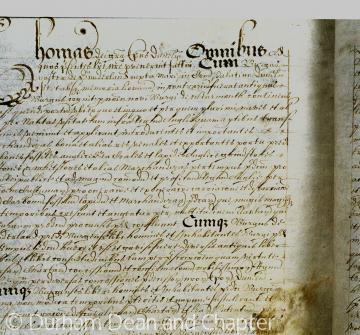Boroughs and Charters
 Opening paragraph of the charter granted to the burgesses and inhabitants of Sunderland in 1634
Opening paragraph of the charter granted to the burgesses and inhabitants of Sunderland in 1634Towns which had charters were boroughs. Charters were granted by the Crown on the petition of townsmen who claimed to exercise rights and to enjoy privileges dating from before Domesday Book. Many towns were seigniorial boroughs which did not have corporate status. Leading townsmen were known as burgesses but they might administer affairs through an institution such as a guild. The lord of the manor usually continued to hold manorial courts. In Sheffield, the burgesses received a charter from the lord of the manor in 1297 but did not achieve full corporate status until 1843. Many chartered towns took the precaution of renewing their charters during the reigns of Charles II and James II.
By the 1830s the number of towns with charters, and the nature of the charters, had spiralled out of control, and a government commission was appointed to look into the existing situation. As a result, legislation was passed in which all those places that had borough status technically lost the status, but in the case of 178 towns this was immediately restored but on a more openly democratic basis (at least in terms of election to office). Many other towns, among them Manchester, Bradford and Sheffield, acquired borough status over the years which followed, and further reform of the system occurred in 1882.Corporate towns had the right to return Members of Parliament. In many cases, the borough was no longer what it had been in the medieval period, and the owner of the site could more or less nominate two MPs. These were the so called ‘rotten’ boroughs which lost their right to return MPs at the time of the Reform Act in 1832. The mayor of a corporation was usually appointed Justice of the Peace for the borough and, together with the corporation, he often exercised jurisdiction also over markets and fairs. Boroughs normally had the right to their own quarter sessions, and other legal jurisdiction within their boundaries.








